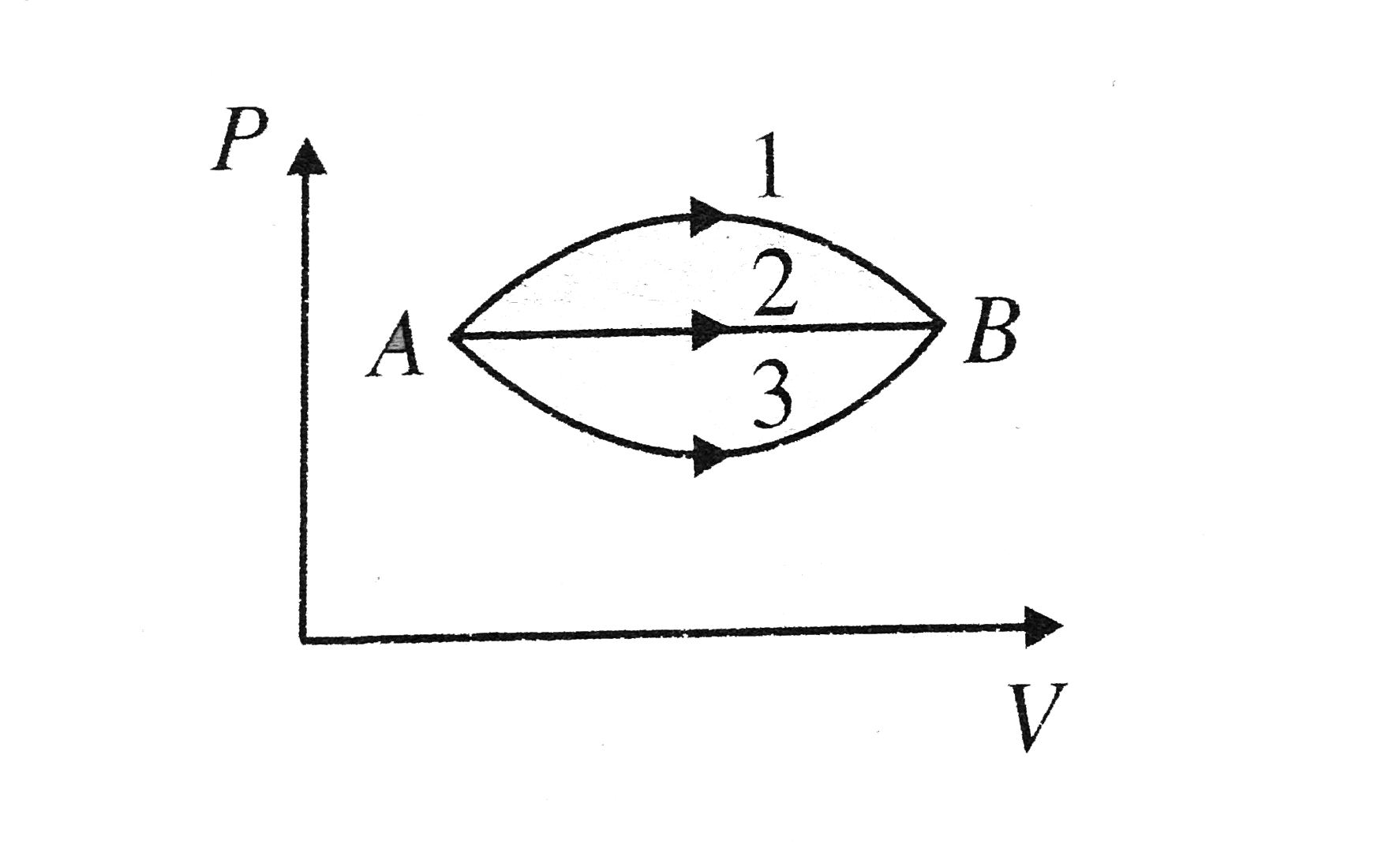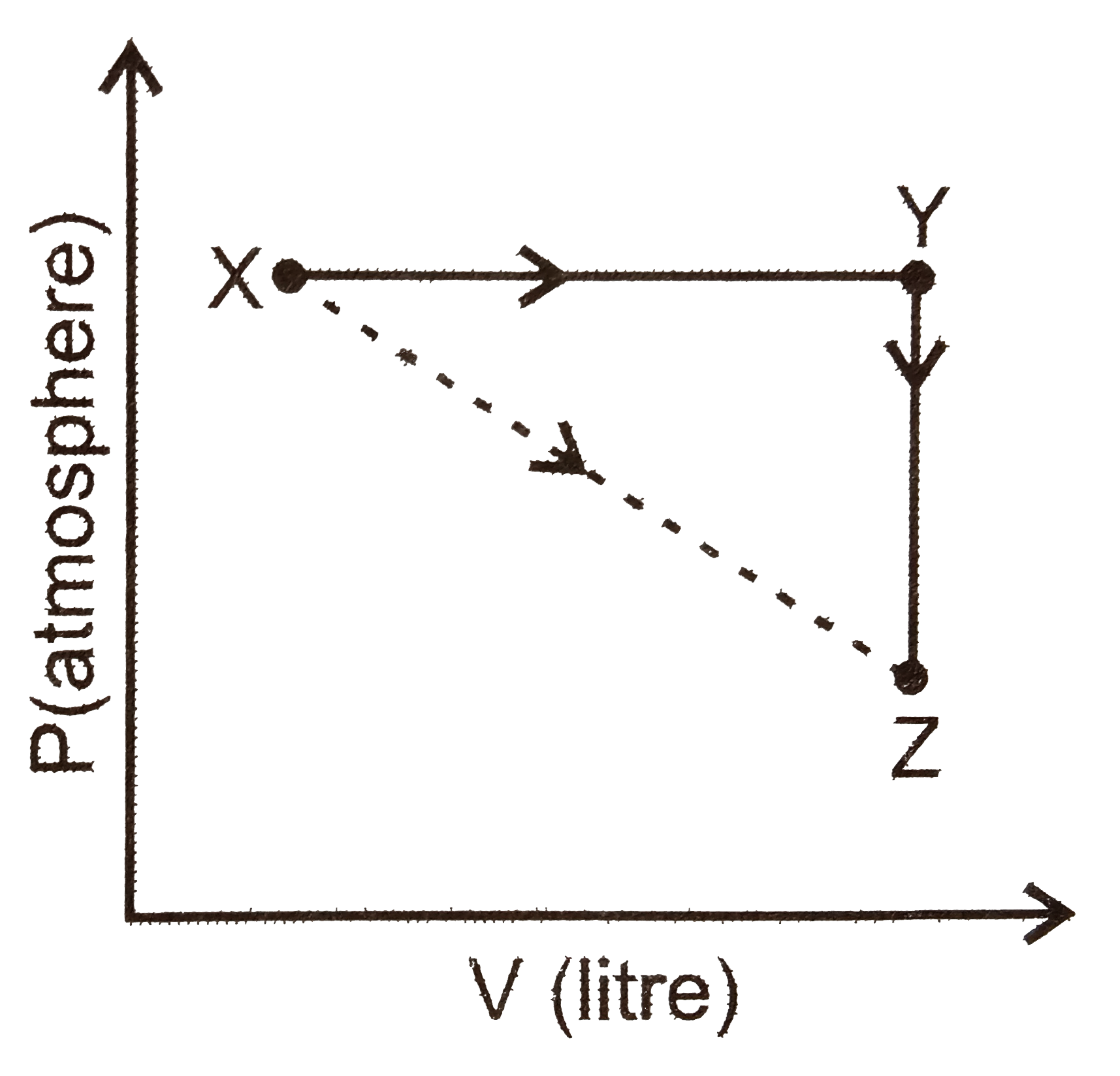An ideal gas undergoes change in its state from the initial state I to the final state F via two possible paths as shown. Then

there is no change in internal energy along path 1
heat is not absorbed by the gas in both paths
the temperature of the gas first increases and then decreases for path 2
work done by the gas is larger in path 1.
The correct Answer is:C
Step by step video, text & image solution for An ideal gas undergoes change in its state from the initial state I to the final state F via two possible paths as shown. Then by Physics experts to help you in doubts & scoring excellent marks in Class 12 exams.
Updated on:21/07/2023Topper's Solved these Questions
Similar Questions
A system is changed from an initial state to a final state to a final state by a maaner such that ΔH=q . If the same change from the initial state to the final state were made by a different path, would ΔH be the same as that to the first path ? Would q ?
View SolutionAn ideal gas is taken from an inirial state I to a final state f in such a way that the ratio of the pressure to the absolute temperature remains constant. What will be the work done by the gas ?
View Solution
Knowledge Check
An ideal gas undergoes isothermal process from some initial state i to final state f. Choose the correct alternatives.
AdU=0Bdθ=0Cdθ=dUDdw=dwAn ideal gas undergoes isothermal process from some initial state i to final state f. Choose the correct alternatives.
AdU=0BdQ=0CdQ−dUDdQ=dWAn idel gas undrgoes isothermal process from some initial state i to final state f. Choose the correct alternatives.
AdU=0BdQ=0CdQ=dUDdQ=dW
A gas undergoes change in its state from position A to position B via three different path as shown in Fig. Select the correct alternatives :

View SolutionFor an ideal gas, consider only P−V work in going from an initial state X to the final state Z. The final state Z can be reached by either of the two paths shown in the figure. Which of the following choice(s) is (are) correct? [Take ΔS as change in entropy and w as work done]

View SolutionOne mole of an ideal gas goes from an initial state A to final state B via two processs : It first undergoes isothermal expansion from volume V to 3V and then its volume is reduced from 3V to V at constant pressure. The correct P−V diagram representing the two process in (figure)
View SolutionOne mole of an ideal gas goes from an initial state A to final state B via two processes : It first undergoes isothermal expansion from volume V to 3V then its volume is reduced from 3V to V at constant pressure. The correct P-V diagram representing the two processes is
View SolutionOne mole of an ideal gas goes from an initial state A to final state B via two processs : It first undergoes isothermal expansion from volume V to 3V and then its volume is reduced from 3V to V at constant pressure. The correct P−V diagram representing the two process in (figure)
View Solution

